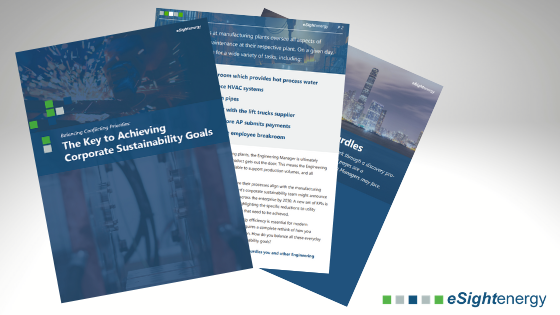A key challenge facing many Engineering Managers in the product development life-cycle is the introduction of new corporate sustainability goals. Having a comprehensive understanding of energy consumption and usage across the plant enables managers to balance the corporate sustainability goals as well as prioritising product development.
A good starting point is having standardized meters. These will ensure consistent data collection that can feed into a central platform for end-to-end visibility and accurate analysis. Ideally, the platform should be capable of automatic data capture, in real time, regardless of utility source or data. If meters are unavailable in certain areas (or not all of the same type) understanding how much energy is being used, by what and when, will be far more difficult than it needs to be.
Industrial energy management is about efficient energy monitoring and reallocating resource at the right time to support production initiatives. Implementing an Energy Management System (EMS) will streamline data integration and reporting, allowing business units and functions to be compared in context, as well as providing the means to compile accurate data. The EMS can also correct issues, identify patterns and address anomalies.
With data standardized and an EMS in place, you now have a complete overview of energy consumption and can devise realistic energy targets and a strategy to achieve them. Targets can be set in the EMS based on aggregated data (ensuring no skewed reporting), meaning everyone in the business can see the progress towards the goals. It’ll also be far more consistent and less error-prone than manual reporting.
New reporting and data visibility will lay the groundwork for a successful change management program and ensure continuous improvement. Employees at all levels will understand the energy key performance indicators (KPIs) and can access the detailed data they need to report on energy saving targets, address problems, use the EMS without issue, and support corporate sustainability goals.
In both the short and long-term, the Energy Management System will help to reduce operational costs and improve performance. As critical components in the production lifecycle are further bolstered by resource from non-essential plant functions, it becomes possible for Engineering Managers to balance conflicting priorities: deal with industrial energy management and get the product out the door.
To find out more about industrial energy management and achieving corporate sustainability goals, download our free eBook: ‘Balancing Conflicting Priorities: The Key to Achieving Corporate Sustainability Goals’.
To see the eSight Energy Management System in action, book a demo with the team.








